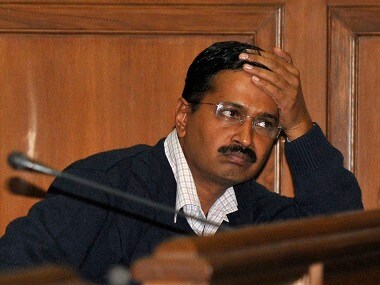The Union Cabinet has okayed the draft of Trafficking of Persons (Prevention, Protection and Rehabilitation) Bill, 2018 that aggravated forms of trafficking, which includes trafficking for the purpose of forced labour, begging, trafficking by administering chemical substance or hormones on a person for the purpose of early sexual maturity, trafficking of a woman or child for the purpose of marriage or under the pretext of marriage or after marriage etc. One of the key features of the new bill is the rehabilitation of the victim which is ‘not contingent upon criminal proceedings being initiated against the accused or the outcome thereof’. The bill also states that a rehabilitation fund has been created for the first time, and this is ‘to be used for the physical, psychological and social well-being of the victim including education, skill development, health care/psychological support, legal aid, safe accommodation etc’. The acknowledgment of the need to rehabilitate shows a positive shift in the attitude of the government towards a population that falls prey to a parallel economy of crime and vulnerability.
Equally parallel is the moral economy of begging that has, for too long, eclipsed the social and economic dynamic that strips persons off a sense of shame and makes them want to embrace misery on their skins for the sake of survival. It pays Rs 357 a day to beg on a busy street of Delhi, as per the findings of a 2017 study titled ‘Dreams on Streets’ by CHETNA (Childhood Enhancement Through Training & Action) an NGO working for the empowerment of street children. A lucrative alternative to such a lifestyle is missing for the children, who are bread earners in families living on streets. The Bombay Prevention of Begging Act, 1959, which was extended to the Union Territory of Delhi in 1960 criminalises begging in the state and the according to the act, beggars found guilty by a court of law are to be sentenced to a minimum of one year and a maximum of three years in an institution certified as a beggar's home. It is important to note that the detainment isn’t just for the beggar but also for the beggar's dependents unless the dependent is a child. So, instead of being rehabilitative, the act is punitive in its character. The lack of political will around repealing the act has given rise to all kinds of interim measures.

As per the Housing and Land Rights Network, the estimated number of homeless people in Delhi varies from 150,000 to 200,000. Firstpost/Pallavi Rebbapragada
For instance, a year ago, the state government started developing a multi-pronged approach to pull people inwards from the capital’s dark and lonely margins by building a non-punitive response framework. For this, it found a knowledge partner in Koshish, a field-action project of the Tate Institute of Social Sciences (TISS). "It was decided that if the law cannot be repealed then the institutions (beggar’s homes) are de-notified and arrests are prohibited, then the establishment can be used for rehabilitative work," said Mohd Tarique, assistant professor at TISS, closely working on the project with the Delhi government. But, take the example of Sewa Kutir, a big observation home in Mukherjee Nagar, Old Delhi, which was de-notified. "The arrests stopped but the Delhi government turned it into a skill development centre under the Pradhan Mantri Kaushal Vikas Yojana, giving the middle-class access to the establishment strictly designed for the destitute," said Tarique who feels that the AAP government’s good pro-poor efforts will suffer a blow if it doesn’t rectify this.
The non-punitive intervention programme recommended by Koshish to the Delhi government focuses on identification, mobilisation, basic services like food, clothing and shelter be provided to the homeless. Aside from this, it recommends that counselling services, health services, de-addiction services, psychological support systems, skill development or entrepreneurship training and livelihood measures for income generation through minor trades be provided. The emphasis on soft-skills training, linkages with social security schemes, public facilities and services and classification of clients seeking special care and protection and referral services for such persons was also suggested. Sources in the Delhi government have said that National Skill Development Commission has sanctioned 1,100 slots for skill training of the beggars in baking and cookery, mobile repairing and retail sales associates and the training is going to start at Sewa Kutir. "But if the building is no longer exclusive to the homeless then the point of our efforts for a particular section of society will be lost," he said.
Tarique was on the committee that prepared the Persons in Destitution (Protection, Care and Rehabilitation) Model Bill, 2016 that does not decriminalise begging but it does say that state government shall establish rehabilitation centres for the care, protection, recreation, rehabilitation and vocational/skill development training of the persons in destitution. "In October 2016, there was a pre-legislative consultation with state government officials and after that, nothing has happened. Now that the anti-trafficking bill has been cleared, can the same rehabilitative approach not be extended to the homeless?" he asked.
The Bombay Prevention of Begging Act, 1959 defines a beggar as someone with ‘no visible means of subsistence and wandering, about or remaining in any public place in such condition or manner, as makes is likely that the person doing so exist soliciting or receiving alms’. The vulnerability before the law extends to the old and the mentally ill. For more than 17 lakh senior citizens in Delhi, there are only two state-funded old age homes and that too in far-flung areas like Bindapur and Lampur.
There’s one judgment that could have changed the game but didn’t. The Delhi government says that beggar courts are not convicting beggars as a fall out of Ram Lakhan vs Govt. of NCT Of Delhi 2006 judgment which stated ‘Convicting a person for a year, who does not have any money would not make the money appear for him after spending that year into any Certified Institution, for that the State needs to provide a helping hand to such people than taking punitive actions against them.’ In this particular case, the petitioner was found begging at the railway crossing of Rampura and a sum of Rs 47 was recovered from him when a personal search was conducted by members of an ‘anti-begging raid’. On being announced guilty by a metropolitan magistrate on the basis of the testimony given by the two police officers, also members of the anti-begging raid, the petitioner was convicted for a year under the Bombay Prevention of Begging Act, 1959. Shockingly, instead of sending him to a certified institution, he was sent to Tihar Jail meant for rigorous prisoners.
Now, if one reads the judgment till the end, the presumption that a beggar is guilty comes forward. It states, ‘The court must, at least, see the possibility of Principle of Admonition before convicting any person under such act which talks of giving a warning to the person and also the nature of punishment should be given according to the type of beggar that the person is.’ On the street, where a broad swathe of poverty paints each one in the same shade, it is hard to differentiate between those part of organised crime and those randomly begging to survive, just as it is difficult to separate mental health patients from drug addicts. Till anything is legally proven, the helplessness will fester.
What Sanjay Gupta, Director of Chetna (NGO) highlighted that the lack of enthusiasm displayed by the political class in amending the outdated begging act leads to confusion regarding accountability among stakeholders. "The politicians think homeless people are the responsibility of the police and the police thinks the labour department is to blame. If the anti-trafficking bill can be passed, then why not repeal begging acts which unfortunately criminalise begging in 20 states," said Gupta highlighting that the colonial law reduces begging to a ‘samajik burai’ or a social evil. If the use of the term ‘vagrant’ (equating the beggar to a wander or a vagabond) can be seen in the West Bengal law, the begging law in Sikkim passed as recently as 2004 also criminalises the act of begging. While Assam and Karnataka make an exception for religious mendicants, Tamil Nadu exempts ‘street artists and performers in the oral tradition, bards, jugglers and street magicians’. Since Chetna’s findings have suggested a large presence of a migrant population among the beggar community in Delhi, for example, the Ghumanta and Charwaha tribal communities of Rajasthan, Gupta believed that a stronger law can be complemented with an inter-state committee to address distress migration more sensitively.
Meanwhile, the Social Welfare Department of the Delhi government is chalking out a target-based intervention plan to dodge the archaic law. Sources within the Delhi government told us that a cabinet note for the skill training of beggars is in circulation. Under the targeted programme, the periphery of 5 km from Kudsia Ghat leading to Yamuna Bazar Hanuman Mandir via ISBT Flyover, Kashmiri Gate, Yamuna Pusta, Nigambodh Ghat, Dandi Park, GPO Underbridge, Calcutta Gate, Angoori Bagh, Peti Market, Jama Masjid and Red Fort Market has been identified. An estimated 5,000 homeless people from the age of five years to 60 years have been identified in the said areas and here, one of the proposed measures is a Need Based Assessment Survey (NBAS).
The Delhi government’s multi-layered plan, sources revealed, will involve the cooperation of various stakeholders like the police, Delhi State AIDS Control Society, Delhi Urban Shelter Improvement Board (the nodal agency for homeless), Ministry of Women and Child Development, National Skill Development Corporation, NGOs and so on. From using a grassroots network of Mohalla clinics and composite clinics especially for substance abuse and micro-financing institution linked initiatives for providing livelihood cover through rickshaws and e-rickshaws, tangential problems associated with beggary will be targeted. Currently, there are 12 beggar homes in which around 383 leprosy affected beggars are also staying.
Some weeks ago, Deputy Chief Minister Manish Sisodia inaugurated a mobile health van to help homeless in deaddiction from drugs at Delhi government’s night shelter at Yamuna Bazaar in the shadows of the Red Fort. Drug addiction among homeless beggars is unmissable. As per the 2016 survey conducted jointly by the Women and Child Development Department and All India Institute of Medical Sciences, there are 70,000 addicts on Delhi’s streets and their initiation into drugs happens as early as age nine. Yamuna Bazaar has a huge community of slum dwellers and the highest drug abusing populations in the city. "The biggest challenge for the homeless in this area and the biggest inhibitor against their using night shelters is the addiction and its own set of challenges that plague this population. But the approach of the baton ‘danda’ works no more, only the approach of love ‘gale se lagana’ applies as the best approach," Sisodia had said at the launch.
If begging is a criminal offence and friendliness is being preached towards homeless addicts, then a constitutional extinguishing of what fuels such irony is due.
Published Date: Mar 08, 2018 17:54 PM | Updated Date: Mar 08, 2018 17:54 PM


